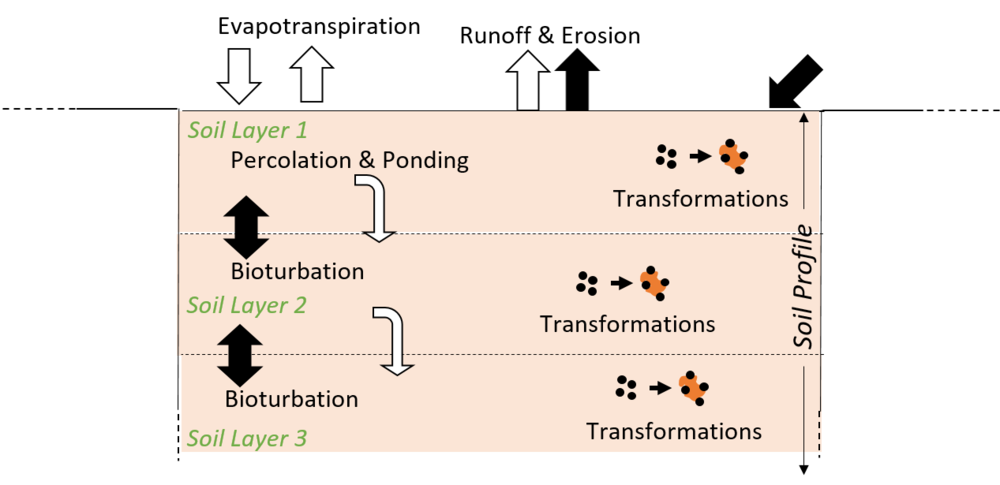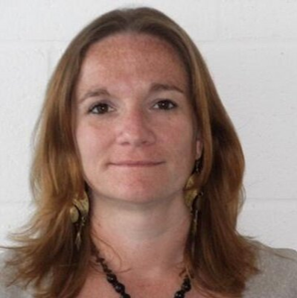Soil model
Within the gridded NanoFASE water-soil-organism model, soil within each grid cell is represented as one or more ‘soil profiles’ which contain several ‘soil layers’. Within each soil profile, soil erosion and vertical percolation are modelled.
Lateral transport of nanomaterials through soils is negligible at large scale; thus lateral subsurface flow between land cells is not included within the NanoFASE water-soil organism model.
 Conceptual model of soil profiles and soil layers within the NanoFASE water-soil organism model
Conceptual model of soil profiles and soil layers within the NanoFASE water-soil organism model
The NanoFASE water-soil organism model takes into account a number of processes that can transfer water, sediment and/or nanomaterials to/from each soil layer:
- Percolation: vertical downward movement of water. Occurs when the volume of water held within the layer exceeds its field capacity.
- Ponding: movement of water to the layer above. Occurs when the volume of water held within the layer exceeds its saturation capacity. The ponded water at the top layer (soil layer 1) contributes to the surface runoff.
- Bioturbation: movement of sediment or soils between soil layers both up and down, effected by living organisms.
Erosion transfers sediment and attached nanomaterials from each soil profile to water bodies:
- Erosion does not affect the soil structure of the profile.
- Daily eroded sediments are estimated using the Revised Universal Soil Loss Equation (RUSLE) (Williams, 1975).
- Estimates of sediment yield derived using MUSLE account for the type of soil, the land cover, the topography, land use management and agricultural practices.
Nanomaterials within each soil layer can undergo certain transformations, which change their form or state:
- Heteroaggregation
- Attachment
- Straining
- Dissolution
- Chemical transformation, e.g. sulfidation, oxidation
This list of transformations is not exhaustive and the NanoFASE water-soil organism model provides sufficient flexibility to easily add extra transformation processes. Similarly, the model’s flexibility enables the user to select only those processes relevant to the nanomaterial being modelled.
Read more |
Read also |
|
Davison, P., Hutchins M. G., Anthony, S. G., Betson, M., Johnson, G. & Lord, E. I. (2005). The relationship between potentially erosive storm energy and daily rainfall quantity in England and Wales. Science of The Total Environment 355 p15. Morgan, R. P. C. & Duzant, J. H. (2007). Modified MMF (Morgan–Morgan–Finney) model for evaluating effects of crops and vegetation cover on soil erosion. Earth Surface Processes and Landforms 32 p90. Neitsch, S. L., Arnold, J. G., Kiniry, J. R., & Williams, J. R. (2011). Soil and Water Assessment Tool - Theoretical Documentation: Texas Water Resources Institute Technical report 406, Texas A&M University System, College Station, Texas, U.S. Williams, J. R. (1975). Sediment-yield prediction with Universal Equation using runoff energy factor Present and Prospective Technology for Predicting Sediment Yield and Sources (Vol. ARS-S-40, pp. 244-252): U.S. Dept. Agric. |
Contact
 Virginie Keller
Virginie Keller
